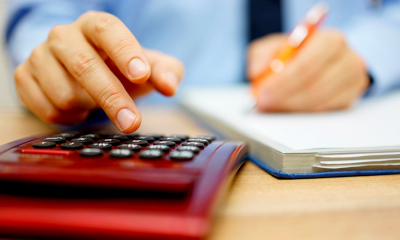
Being a self-employed sole trader can be a straightforward way to be in business, without the added paperwork of forming a company. But you still need to make sure you are complying with your tax obligations.
Self-employment status
If you are in business for yourself, you may need to check that you really are self-employed. For example, a bricklayer who does work for a building firm could be a genuinely self-employed subcontractor or an employee of the builder.
As far as tax is concerned, your employment status depends on several factors. You are more likely to be self-employed if you are running your own business, making your own decisions and using your own equipment. If you are working set hours, doing what you are told, you may be an employee, even if you only work part-time for that employer.
If you are a sole trader, you must register as self-employed with HMRC. It’s a good idea to do this as soon as you start in business, to make sure that you get the right systems set up and keep up-to-date with your tax paperwork.
Self-employed taxes
Tax for the self-employed is based on your business profits, regardless of how much income you actually draw from the business. Profits are usually worked out over a 12-month accounting period. You need to make sure you keep proper accounting records with all the information you need to complete your self-assessment tax return.
Tax is payable in two instalments, at the end of January and the end of July each year, based on the profits in your previous tax return. A balancing payment each January takes account of how your profits change from one year to the next.
As well as income tax, you are liable for self-employed National Insurance contributions. National Insurance contributions are collected in the same way as your income tax payments.
Like any business, you may also have to deal with other taxes. If you have employees, you need to operate PAYE (Pay As You Earn) to handle tax and National Insurance contributions on payroll and benefits. You may also need to register for VAT and to pay business rates or other property taxes.
From 6 April 2026, MTD for Income Tax (MTD for ITSA) will begin to apply for some self-employed people and landlords with property income.
Once you fall under the scope of MTD for ITSA, you will have to:
- keep digital financial records
- submit quarterly updates to HMRC
- file an annual online self assessment tax return
HMRC publish extensive guidance on tax requirements. You can also contact HMRC if you have a question about taxes.
Self-employed tax planning
You should make sure you claim all the expenses you are allowed to set against profits, so that you minimise the tax you pay. For example, there may be various home expenses to claim if you work from home.
It’s also worth reviewing from time-to-time whether self-employment is the best option. Alternatively, you could turn your business into a company. You would then pay corporation tax on the company’s profits and take salary and dividends from your company for your personal income requirements. Depending on your circumstances, this may be more tax-efficient.
Thorough tax planning should look at both your business and personal income to help you identify the best ways to save tax. You may want to get tax planning advice from your accountant, particularly if you have complex business or personal tax affairs.



